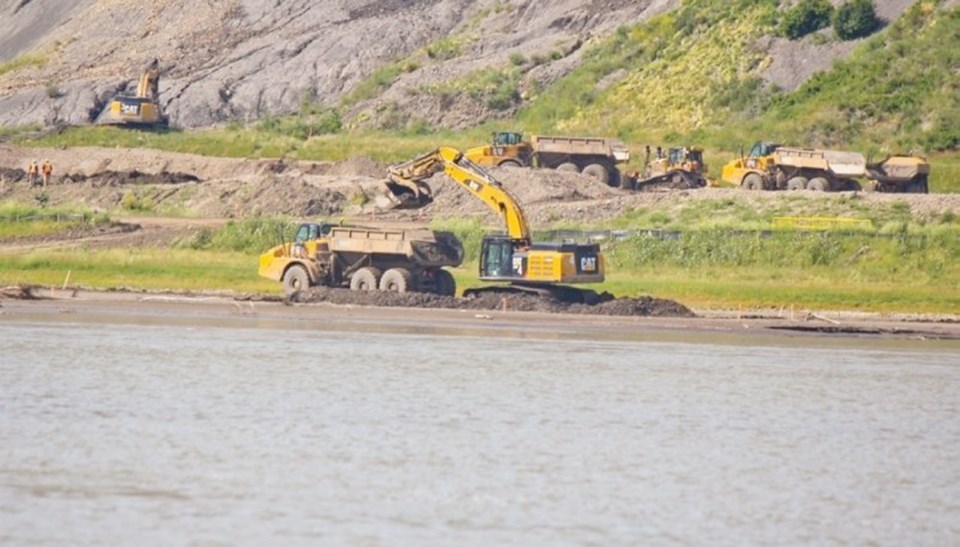 The B.C. Utilities Commission looks to be steering the NDP cabinet toward cancelling the Site C power project on the Peace River.
The B.C. Utilities Commission looks to be steering the NDP cabinet toward cancelling the Site C power project on the Peace River.
There are no direct recommendations to that effect. But many of the findings and observations in its inquiry report released Wednesday point in that direction.
For instance, the panel found it’s not the $8.3-billion project first advertised. It’s going to be more like $10 billion or $12 billion. The panel doubts it will be finished on schedule by 2024. The panel doubts the claimed need for all the new power will materialize.
The independent commission looked skeptically at a host of factors that B.C. Hydro used to plan and promote the dam and that the B.C. Liberals relied on to give it the green light three years ago. It sounded dubious about many of them.
The one thing working in the project’s favour is the acknowledged uncertainty about various projections. If Hydro’s forecast of electricity demand turns out to be accurate, the dam could turn out to be the cheapest option. And if Site C and a hypothetical alternative suite of measures are stacked side-by-side, the impact on electricity rates is almost equal.
The cabinet will take until the end of the year to make the call, with the project continuing to burn through $2 million a day in construction costs, on top of the $2 billion spent to date. If it’s cancelled it will be the most expensive reversal in provincial history, given that it will take another $1.8 billion just to shut down the job site.
That and the job loss might be enough to prompt a cabinet decision to carry on. But Wednesday’s report still looks weighted in favour of cancellation.
The panel said the dam is inherently at risk of even more cost overruns, it’s already overbudget two years into a nine-year schedule, there are tension cracks in the riverbanks and disputes with contractors.
The commission discounted Hydro’s load forecast and opted to rely on a lower one, adding that there are risks that could lower it even further.
It said alternative power is getting increasingly viable and could provide just as much benefit. Disruptive technology, such as batteries or home-scale generation, could reduce the dam’s projected benefits. The continued energy glut could make it even harder to sell Site C surplus power. And Hydro’s financing assumptions might not be supportable, given interest-rate changes.
But the guessing game works both ways. Wind power might be more expensive than expected, and there might be no geothermal potential.
The First Nations issues, on which the NDP government has put a lot of weight, are just as complicated. Whether the dam infringes on their rights could wind up in the Supreme Court of Canada years from now, which adds another level of potential risk. It was telling that the government’s first move after the report dropped was to announce more consultation with First Nations.
The most intriguing parts of the report are the references to the alternatives. The options suggest a dramatically different future as far as power is concerned.
“B.C. Hydro could implement time-based rates for residential customers and hot-water shutoffs during peak times could be encouraged. Time-of-use rates can be introduced on an optional basis [courtesy of smart meters], by providing a credit on the customer’s bill if they voluntarily curtail usage during peak periods.”
Dinner at 3:30 p.m., anyone?
“Industrial curtailment” — extended plant shutdowns during peak winter demand — is also touted as a viable way to manage the load and has already been piloted.
The biggest difference in the future is going to be in the price of electricity, probably regardless of whether the dam is cancelled.
Although Hydro is projecting rate hikes to keep up with inflation from 2025 to 2036, the panel doubts that point. It predicts “considerable upward pressure” on rates in the medium and long term, to the point where “demand destruction” is a concern. Users will curtail usage because they can’t afford it, which would increase low-income “energy poverty.”
The utility has a major debt load and the dam only adds to it.
For all the recent alarms about rate hikes, B.C. still has comparatively cheap power. Those days look to be drawing to a close. Which makes the upcoming cabinet decision even more difficult.



